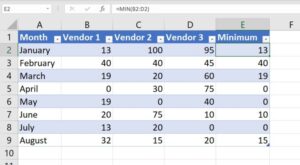
IBM’s latest quarterly report painted a mixed picture, with robust earnings and strong AI-driven demand, yet investors focused on a slowdown in the company’s key cloud software business.
The tech giant reported $16.3 billion in revenue for the third quarter, up 9% year over year, surpassing analyst estimates of $16.09 billion, according to LSEG data. Net income climbed to $1.74 billion, or $1.87 per share, compared to a loss of $330 million a year earlier.
Despite the upbeat results, IBM shares fell nearly 7% in pre-market trading on Thursday, reflecting investor unease over decelerating cloud growth, particularly in the Red Hat hybrid cloud unit.
Cloud growth slows, but AI keeps rising
The highlight of the quarter — IBM’s AI book of business — rose to $9.5 billion, a $2 billion increase from the previous quarter.
“Our AI book of business now stands at more than $9.5 billion,” IBM chairman and CEO Arvind Krishna said in the company’s press release. “Clients globally continue to leverage our technology and domain expertise to drive productivity in their operations and deliver real business value with AI.”
But it was the slowing cloud segment that grabbed headlines. Revenue in Red Hat, IBM’s hybrid cloud arm, grew 14%, down from 16% growth in the prior quarter. This slowdown dampened enthusiasm for what has been one of IBM’s highest-margin businesses.
AI-powered mainframes fuel infrastructure boom
Despite the cloud segment’s slight dip, IBM’s hardware business, particularly its mainframe systems, surged. Infrastructure revenue climbed 17% to $3.6 billion, led by a 61% increase in IBM Z mainframe sales. The new z17 mainframe, designed for AI workloads, saw strong demand across the financial sector.
According to IBM CFO James Kavanaugh, the System z17 platform “delivered its highest third-quarter revenue in nearly two decades,” driven by financial institutions using the technology to maintain strict data and encryption standards.
Software and consulting deliver mixed signals
IBM’s software unit, which includes Red Hat and automation tools, generated $7.2 billion in revenue, up 10% year-over-year. Automation software led the charge with 24% growth, while data-related products rose 8%, according to IBM’s press release.
Consulting revenue also inched higher, up 3% to $5.3 billion, as more enterprises sought IBM’s help in deploying and managing AI at scale. Still, the slight slowdown in software sales left some investors uneasy about IBM’s ability to sustain momentum in its high-margin digital services.
IBM reported a gross profit margin of 57.3% (GAAP) and 58.7% (non-GAAP), both improving over last year. The company generated $2.4 billion in free cash flow during the quarter and returned $1.6 billion to shareholders through dividends.
CFO Kavanaugh highlighted that the results were underpinned by disciplined execution and broad portfolio strength.
“New innovation, the strength and diversity of our portfolio, and our disciplined execution led to acceleration in revenue growth and profit in the quarter,” Kavanaugh noted.
Buoyed by strong earnings, IBM raised its full-year forecast, now expecting revenue growth of more than 5% at constant currency and free cash flow of about $14 billion for 2025.
In April, IBM announced plans to invest $150 billion in the US over the next five years.
Source of Article



